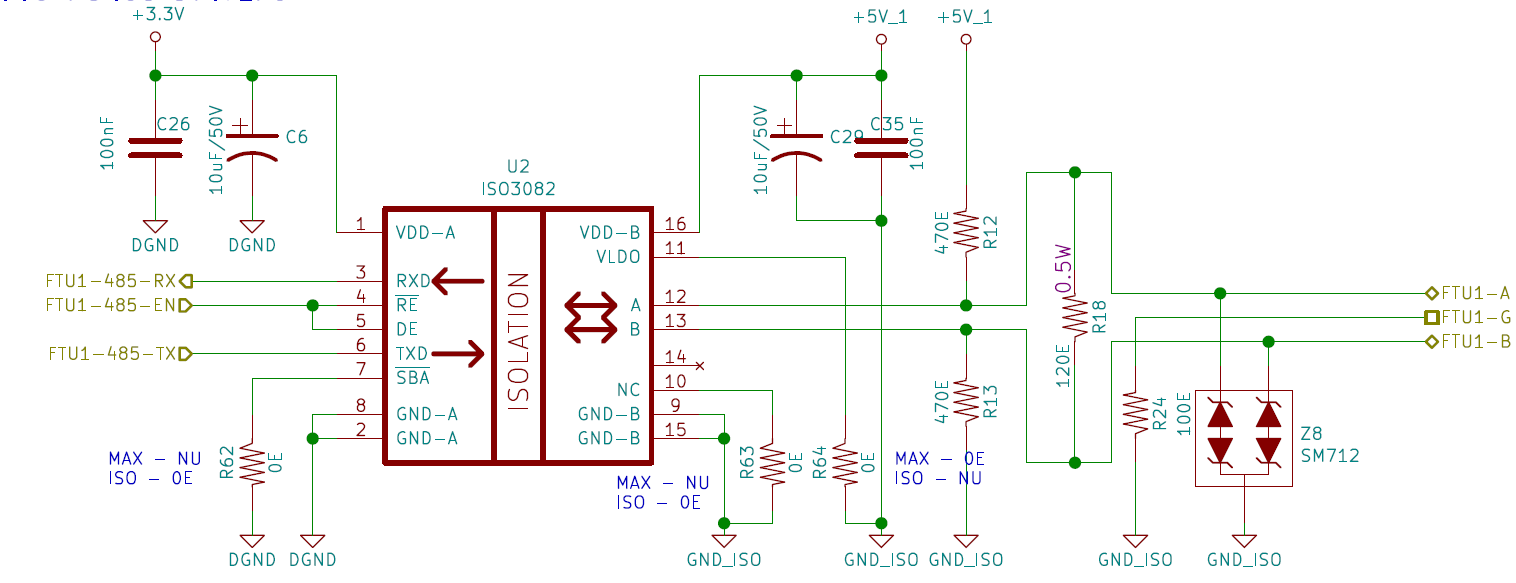Other Parts Discussed in Thread: ISO1410
Hello,
We are using ISO3082 in Industrial environment for communication over fairly long distances of 300-500 meters at 9600bps. Here is the partial schematic,
Please note that we don't use the bias resistors and same board is also used with MAX14945EW+, depending on part availability. R62, R63 are 0E & R64 OPEN when ISO3082 is used.

We have so far used around 1200 ISO3082s over the last 12 months.But we're now seeing random failures of ISO3082, around 2-3 per month over last 3-4 months.
- There are no visible damages to IC, nor are there any supply short or other pin shorts on any of the damaged units. IC simply stops communicating. After replacing only the damaged IC, everything works fine.
- TVS SM712 is also not damaged in any of the cases.
- There are total 6 ISO3082s on single board, all fed from same +5V supply(output side) independent of supply for input side, but only 1 or 2 fail.
- There are no damages on input side ever.
- At Other end of comm. links, there are different RS485 bus drivers, like SN75176(@ 5V), MAX3485(@ 3.3V) & Serial-USB Converter Module.
- Around 50% of the failures are with Serial-USB Converter Module. These are procured by customer & beyond our control.
- We always use 2-Wires A/B only. And cables are twisted pair with non-flammable PVC cover. Since our systems are replacing older systems, we have to use the per-existing cabling.
- Cable ducts carrying the communication cable sometimes also carry the 230VAC supply cables to remote stations.
What could be causes of IC failure? What measures can we take to avoid or at least minimize the IC failures?
Thanks in advance,
Saumitra A Deshpande



